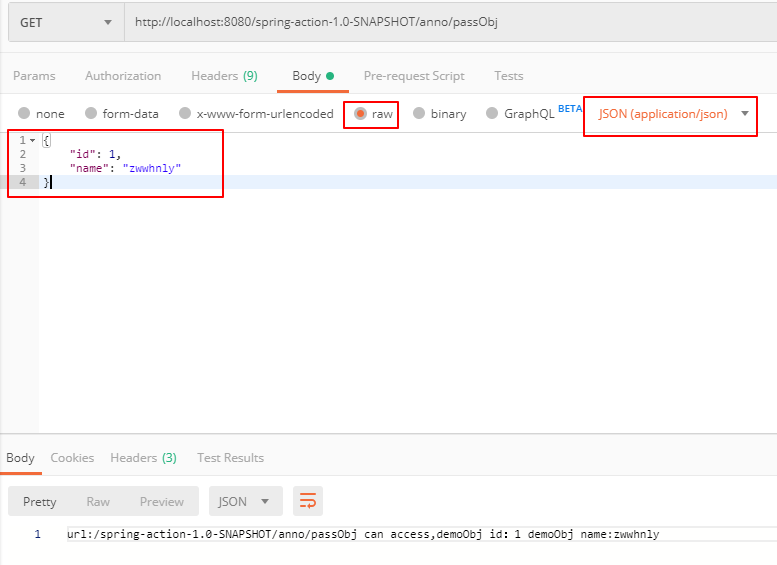标签:多公司 src java ee get请求 需要 入门 mvc tar pos
在使用Spring MVC开发Web应用程序时,控制器Controller的开发非常重要,虽然说视图(JSP或者是Thymeleaf)也很重要,因为它才是直接呈现给用户的,不过由于现在前端越来越重要,很多公司都开始采用前后端分离的开发模式,所以我们暂时可以将精力放在开发控制器上。
使用Spring MVC开发控制器主要使用以下7个注解:
接下来,我们依次讲解每个注解的使用方法。
先回顾下上篇博客中新建的简单控制器HelloController:
package chapter05.controller;
import org.springframework.stereotype.Controller;
import org.springframework.web.bind.annotation.RequestMapping;
import org.springframework.web.bind.annotation.RequestMethod;
@Controller
public class HelloController {
@RequestMapping(value = "index", method = RequestMethod.GET)
public String hello() {
// 这里返回的逻辑视图名
return "index";
}
}这里@Controller注解的作用是用来声明控制器,它的源码如下所示:
package org.springframework.stereotype;
import java.lang.annotation.Documented;
import java.lang.annotation.ElementType;
import java.lang.annotation.Retention;
import java.lang.annotation.RetentionPolicy;
import java.lang.annotation.Target;
@Target({ElementType.TYPE})
@Retention(RetentionPolicy.RUNTIME)
@Documented
@Component
public @interface Controller {
String value() default "";
}这里值得注意的是,@Controller注解使用了@Component注解,而@Component注解我们并不陌生,它用来声明一个Bean。
虽然有些书中说可以把@Controller注解替换为@Component注解,运行没有差别,只是表意性差一点,但是如果你将上面代码中的@Controller注解修改为@Component注解,然后重新打包发布到Tomcat,会发现访问地址http://localhost:8080/spring-action-1.0-SNAPSHOT/index时,报如下所示的404错误:

将@Component注解还原为@Controller注解,然后重新打包发布到Tomcat,再次访问地址http://localhost:8080/spring-action-1.0-SNAPSHOT/index时,访问正常:

所以,在Spring MVC中声明控制器时,推荐使用@Controller注解。
注意事项:程序员在阅读技术书籍时,要多思考,多尝试,因为书籍中讲解的,很可能是错的。
@RequestMapping注解用来映射Web请求,它有2种使用形式:
@RequestMapping注解时,这个注解会应用到控制器的所有处理器方法上,处理器方法上的@RequestMapping注解会对类级别上的@RequestMapping注解的声明进行补充。@RequestMapping注解常用的3个参数如下所示:
指定method值时使用org.springframework.web.bind.annotation.RequestMethod枚举:
package org.springframework.web.bind.annotation;
public enum RequestMethod {
GET,
HEAD,
POST,
PUT,
PATCH,
DELETE,
OPTIONS,
TRACE;
private RequestMethod() {
}
}指定produces值时一般使用org.springframework.http.MediaType类下的常量:
public static final String APPLICATION_JSON_VALUE = "application/json";
public static final MediaType APPLICATION_JSON_UTF8 = valueOf("application/json;charset=UTF-8");
public static final String APPLICATION_JSON_UTF8_VALUE = "application/json;charset=UTF-8";为了更好的理解,我们在HelloController类上添加如下代码:
package chapter05.controller;
import org.springframework.stereotype.Controller;
import org.springframework.web.bind.annotation.RequestMapping;
import org.springframework.web.bind.annotation.RequestMethod;
@Controller
@RequestMapping("/hello")
public class HelloController {
@RequestMapping(value = "index", method = RequestMethod.GET)
public String hello() {
// 这里返回的逻辑视图名
return "index";
}
}重新打包并部署到Tomcat中,此时的访问地址从之前的http://localhost:8080/spring-action-1.0-SNAPSHOT/index变成了http://localhost:8080/spring-action-1.0-SNAPSHOT/hello/index,如下所示:

@RequestMapping注解的value属性还支持接受一个String类型的数组,如下所示:
@RequestMapping({"/hello", "/index"})
public class HelloController {
// 省略其它代码
}此时也可以通过地址http://localhost:8080/spring-action-1.0-SNAPSHOT/index/index进行访问:

在上面的代码中,我们的方法是返回逻辑视图名index,然后由视图解析器最终找到运行时的/WEB-INF/classes/views/index.jsp视图,但有时我们不需要返回一个页面,而是直接返回数据给到前端。
此时我们可以使用@ResponseBody注解,该注解可以放在返回值前或者方法上,用于将返回值放在response体内,而不是返回一个页面。
为了更好的理解,我们新建个DemoAnnoController控制器如下所示:
package chapter05.controller;
import org.springframework.http.MediaType;
import org.springframework.stereotype.Controller;
import org.springframework.web.bind.annotation.RequestMapping;
import org.springframework.web.bind.annotation.RequestMethod;
import org.springframework.web.bind.annotation.ResponseBody;
import javax.servlet.http.HttpServletRequest;
@Controller
@RequestMapping("/anno")
public class DemoAnnoController {
@RequestMapping(value = "/index", method = RequestMethod.GET, produces = MediaType.TEXT_PLAIN_VALUE)
public @ResponseBody
String index(HttpServletRequest request) {
return "url:" + request.getRequestURI() + " can access";
}
}重新打包并部署到Tomcat中,访问地址http://localhost:8080/spring-action-1.0-SNAPSHOT/anno/index,效果如下所示:

也可以将@ResponseBody注解放在方法上,如下所示:
@RequestMapping(value = "/index", method = RequestMethod.GET, produces = MediaType.TEXT_PLAIN_VALUE)
@ResponseBody
public String index(HttpServletRequest request) {
return "url:" + request.getRequestURI() + " can access";
}@RequestParam注解用于接收URL中的参数信息。
为了更好的理解 ,我们在DemoAnnoController控制器中添加如下方法:
@RequestMapping(value = "/requestParam", method = RequestMethod.GET, produces = "text/plain;charset=UTF-8")
@ResponseBody
public String passRequestParam(@RequestParam("id") Long id, @RequestParam("name") String name, HttpServletRequest request) {
return "url:" + request.getRequestURI() + " can access,id: " + id + ",name=" + name;
}重新打包并部署到Tomcat中,访问地址http://localhost:8080/spring-action-1.0-SNAPSHOT/anno/requestParam?id=1&name=zwwhnly ,效果如下所示:

注意事项:上面示例中,Url中的参数名称和方法中的变量名称完全一致,所以可以省略掉
@RequestParam注解,不过为了代码的易读性,建议保留@RequestParam注解。
如果不传递参数,访问地址http://localhost:8080/spring-action-1.0-SNAPSHOT/anno/requestParam,则会提示如下信息:

或者只传递其中1个参数,访问地址http://localhost:8080/spring-action-1.0-SNAPSHOT/anno/requestParam?id=1,则会提示如下信息:

由此也说明,使用了
@RequestParam注解的参数,在Url中必须传递。
不过,@RequestParam注解提供了defaultValue属性,可以给参数指定默认值,比如我们给参数id设置默认值1,给参数name设置默认值zwwhnly,然后访问地址http://localhost:8080/spring-action-1.0-SNAPSHOT/anno/requestParam,效果如下所示:

或者访问地址http://localhost:8080/spring-action-1.0-SNAPSHOT/anno/requestParam?id=2,效果如下所示:

不过,还是有一个异常场景需要注意,就是Url中传递的参数和方法中定义的参数类型不匹配,比如我们将id的值传错,访问地址http://localhost:8080/spring-action-1.0-SNAPSHOT/anno/requestParam?id=zwwhnly&name=zwwhnly,会看到如下报错信息:

@PathVariable注解也是用于接收URL中的参数信息,不过和@RequestParam注解稍有不同。
@PathVariable注解用于解析Url中的路径参数,如https://www.cnblogs.com/zwwhnly/中的zwwhnly部分,而@RequestParam注解用于解析Url中的查询参数,如https://i.cnblogs.com/posts?page=2中的page部分。
为了更好的理解 ,我们在DemoAnnoController控制器中添加如下方法:
@RequestMapping(value = "/pathvar/{str}", produces = "text/plain;charset=UTF-8")
public @ResponseBody
String demoPathVar(@PathVariable("str") String str, HttpServletRequest request) {
return "url:" + request.getRequestURI() + " can access,str: " + str;
}重新打包并部署到Tomcat中,访问地址http://localhost:8080/spring-action-1.0-SNAPSHOT/anno/pathvar/zwwhnly ,效果如下所示:

注意事项:如果
@PathVariable注解中指定value属性的话,它会假设占位符的名称与方法的参数名相同。
因为这里方法的参数名正好与占位符的名称相同,所以我们可以去掉@PathVariable注解的value属性:
@RequestMapping(value = "/pathvar/{str}", produces = "text/plain;charset=UTF-8")
public @ResponseBody
String demoPathVar(@PathVariable String str, HttpServletRequest request) {
return "url:" + request.getRequestURI() + " can access,str: " + str;
}@RequestBody注解允许request的参数在request体中,而不是直接链接在地址后面,该注解放在参数前。
为了更好的理解 ,我们在DemoAnnoController控制器中添加如下方法:
@RequestMapping(value = "/obj", produces = MediaType.APPLICATION_JSON_UTF8_VALUE)
@ResponseBody
public String passObj(@RequestBody DemoObj demoObj, HttpServletRequest request) {
return "url:" + request.getRequestURI() + " can access,demoObj id:" + demoObj.getId() +
" demoObj name:" + demoObj.getName();
}重新打包并部署到Tomcat中,然后使用Postman工具调用接口http://localhost:8080/spring-action-1.0-SNAPSHOT/anno/passObj,效果如下所示:

@RestController是一个组合注解,它组合了@Controller注解和@ResponseBody注解,源码如下所示:
package org.springframework.web.bind.annotation;
import java.lang.annotation.Documented;
import java.lang.annotation.ElementType;
import java.lang.annotation.Retention;
import java.lang.annotation.RetentionPolicy;
import java.lang.annotation.Target;
import org.springframework.stereotype.Controller;
@Target({ElementType.TYPE})
@Retention(RetentionPolicy.RUNTIME)
@Documented
@Controller
@ResponseBody
public @interface RestController {
String value() default "";
}因此,如果某个控制器中所有的方法都只是返回数据而不是页面的话,就可以使用@RestController注解。
为了更好的理解 ,我们举个具体的示例。
首先,在pom.xml中添加如下依赖,用于对象和json之间的转换:
<dependency>
<groupId>com.fasterxml.jackson.core</groupId>
<artifactId>jackson-databind</artifactId>
<version>2.9.9</version>
</dependency>然后新建控制器DemoRestController如下所示:
package chapter05.controller;
import chapter05.model.DemoObj;
import org.springframework.http.MediaType;
import org.springframework.web.bind.annotation.RequestBody;
import org.springframework.web.bind.annotation.RequestMapping;
import org.springframework.web.bind.annotation.RequestMethod;
import org.springframework.web.bind.annotation.RestController;
@RestController
@RequestMapping("/rest")
public class DemoRestController {
@RequestMapping(value = "/getjson", method = RequestMethod.GET, produces = MediaType.APPLICATION_JSON_UTF8_VALUE)
public DemoObj getjson(@RequestBody DemoObj demoObj) {
return new DemoObj(demoObj.getId(), demoObj.getName());
}
}因为使用@RestController注解,相当于同时使用了@Controller注解和@ResponseBody注解,所以上面的代码等价于下面的代码:
package chapter05.controller;
import chapter05.model.DemoObj;
import org.springframework.http.MediaType;
import org.springframework.stereotype.Controller;
import org.springframework.web.bind.annotation.*;
@Controller
@ResponseBody
@RequestMapping("/rest")
public class DemoRestController {
@RequestMapping(value = "/getjson", method = RequestMethod.GET, produces = MediaType.APPLICATION_JSON_UTF8_VALUE)
public DemoObj getjson(@RequestBody DemoObj demoObj) {
return new DemoObj(demoObj.getId(), demoObj.getName());
}
}重新打包并部署到Tomcat中,然后使用Postman工具调用接口http://localhost:8080/spring-action-1.0-SNAPSHOT/rest/getjson,效果如下所示:

源码地址:https://github.com/zwwhnly/spring-action.git,欢迎下载。
Craig Walls 《Spring实战(第4版)》
汪云飞《Java EE开发的颠覆者:Spring Boot实战》
欢迎扫码关注微信公众号:「申城异乡人」,定期分享Java技术干货,让我们一起进步。

标签:多公司 src java ee get请求 需要 入门 mvc tar pos
原文地址:https://www.cnblogs.com/zwwhnly/p/11572302.html